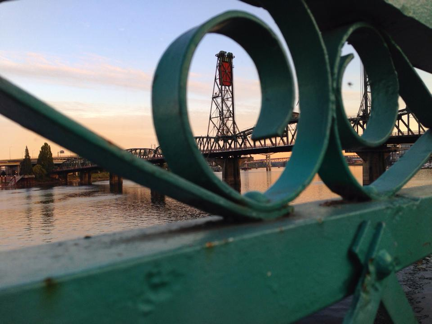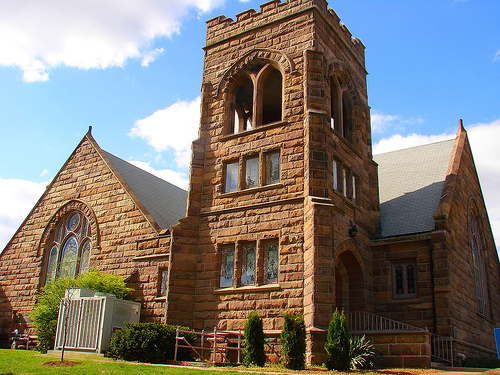
SE
O 28th and Ankeny!
I heart your
ankle lace-up
booties
and piecey
top knot

SE
O 28th and Ankeny!
I heart your
ankle lace-up
booties
and piecey
top knot

When you’re a carpenter’s son there are things you don’t tell your mother. The old asbestos siding Dad had you driving nails into, for instance. Or the ceiling fan he wired without first shutting off the power. Or how you close your eyes when you bring the round whirling blade of the chop saw down on a length of spouting so you won’t get any flecks of aluminum in your eyes. How it just seems safer that way.
When I see handmade cloth, with its uneven selvedges and irregularities, I feel a kinship. My mother was a weaver. I would come home from school and find my mother weaving, warping, or winding yarn. She wove on traditional four- or eight-harness looms, wooden frames the size of a grand piano. I grew up with the household sounds (and vocabulary) of the 1700s—the whizz of a shuttle, the thump of the beater, the rattle of heddles, and the shunk of harnesses.
My mother made suitings, dress fabrics, coverlets, upholstery, shawls, tablecloths—hundreds of yards. Now eighty-nine, she wove into her late seventies when the physical labor became too strenuous. But her creations will last forever, as handwoven cloth does. The oldest known textile fibers, twisted flaxen cords from the Caucasus, are 34,000 years old. I am pretty sure that 34,000 years from now archaeologists will be baffled by evidence of a mid-twentieth century handweaving culture in the Washington, D.C. suburbs.
For this month’s poetry feature, we are publishing a collection of seven new poems by four The Common contributors.
By SCOTT GEIGER
“We have the mind, body, and the mind/body all organizing this building,” offers architect Chris McVoy, metaphorically describing the Campbell Sports Center that opened this fall at Columbia University. The building is the outward expression of an athlete’s inner journey. In a short film, McVoy and his partner and mentor, Steven Holl, discuss their design intentions and the character of experience they’ve created.

Sundays, my parents would pin
their names to dress clothes.
The labelmaker’s impressions formed
letters unevenly, and at the end
Sawt al-Watan, a major Palestinian news website, shares The Common‘s vision and work with Hisham Bustani’s writings.
Hard to believe that, after all of it,
in bed for good now, knowing you haven’t done
one thing of any lasting benefit
or grasped how to be happy, or had fun,
By TYLER SAGE
1.
He wakes from dreams of killing. Heavy timber. Shaggy forms moving through the rocks, the alpine flowers. A plane passing overhead in his sleep, in his dreams, a silver spot against the sky. He raises the rifle. He wakes and is in the night. The animals fade, the air thickens. He is alone and paralyzed, and he wakes, and she is sleeping next to him.